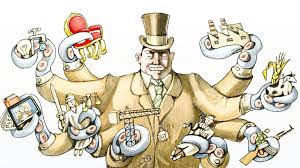Greed is often seen as a driver of ambition, but in the context of teamwork, it can act as a silent saboteur. When individuals prioritize personal gain over collective success, the entire team suffers. In this blog post, we’ll explore how greed undermines team success and share actionable tips to foster a more collaborative environment.
The Impact of Greed on Team Dynamics
1. Erodes Trust
Greed fosters a culture of competition rather than collaboration. When team members prioritize their own interests, trust deteriorates, and people become less willing to share ideas or support one another.
2. Stifles Innovation
Innovation thrives on collaboration. Greedy behavior often leads to hoarding resources or ideas, preventing the cross-pollination of thoughts that drive creativity and progress.
3. Creates Toxic Work Environments
Greedy actions—such as taking credit for others’ work or prioritizing personal gain—lead to resentment and conflicts, resulting in a toxic atmosphere that hampers productivity.
4. Hinders Long-Term Success
While greed might bring short-term gains for an individual, it often undermines the collective goals of the team, leading to poor performance and missed opportunities in the long run.
Interactive Exercise 1: Self-Reflection
Take a moment to reflect on your role within your team:
- Have you ever prioritized your own success over the team’s goals? Why?
- How do you react when a colleague achieves success?
- What can you do differently to contribute more to team success?
Write down your thoughts and identify one habit you’d like to change to better support your team.
How to Combat Greed in Teams
1. Promote a Shared Vision
Define clear team goals that align with individual aspirations. When everyone works toward a shared purpose, the focus shifts from personal gain to collective success.
2. Encourage Open Communication
Foster an environment where team members feel safe to express concerns and share ideas. Transparency reduces the likelihood of selfish behavior.
3. Reward Team Contributions
Acknowledge and celebrate team achievements instead of focusing solely on individual accomplishments. This reinforces the value of collaboration.
4. Lead by Example
Leaders set the tone for the team. Demonstrate selflessness, share credit, and prioritize the team’s needs over personal ambitions.
5. Implement Accountability Mechanisms
Introduce systems to monitor and address behaviors that undermine teamwork, such as hoarding resources or neglecting team responsibilities.
Interactive Exercise 2: Team Bonding Activity
Step 1: Organize a team challenge, such as solving a puzzle or completing a project, where success depends on collaboration.
Step 2: During the activity, ensure that roles and tasks are shared equally, and encourage team members to rely on each other’s strengths.
Step 3: Afterward, discuss what worked well and how everyone’s contributions made a difference. Reflect on how this approach can be applied to daily work tasks.
Overcoming Challenges
- Identifying Greedy Behavior: Watch for signs like excessive self-promotion, lack of cooperation, or reluctance to share resources.
- Addressing Greed Directly: Have honest, respectful conversations with team members whose actions are impacting the group negatively.
- Building a Culture of Gratitude: Encourage gratitude within the team by regularly acknowledging each other’s efforts and contributions.
Interactive Poll: Share Your Perspective
- What’s the most significant challenge your team faces when addressing greedy behavior?
- Lack of accountability
- Fear of confrontation
- Resistance to change
Share your answer in the comments and let’s brainstorm solutions together!
